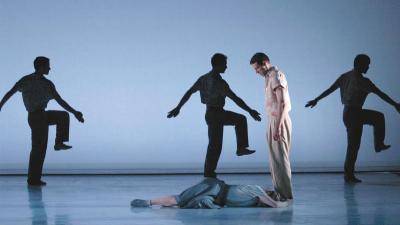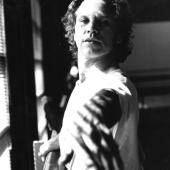Paul Taylor was the last of America’s founding modern dance titans. A graduate of Martha Graham’s company, he went on to remake modern dance in his own indelible image during a 64 year career and an opus of 147 dances. His dances, even the ones that were upbeat, often seemed laced with his characteristic sense of ennui. The eclecticism is legendary. There was the gauzy romantic Taylor of works like Aureole and Eventide, the avant-garde Taylor of Seven New Dances, the dark ritualist Taylor of Cloven Kingdom or Banquet of Vultures, the zany Taylor of Gossamer Gallants and Diggity, and the Taylor of a host of other works, like Company B, Piazzolla Caldera, and Esplanade, all of them known, and now beloved, monuments of American dance.

With the creation of Paul Taylor’s American Modern Dance in 2014, he sought an avenue to put his work and company on a footing that would live beyond him by presenting his works alongside other legacy compositions as well as introducing contemporary choreographers as part of the company’s regular programming. Like Mark Morris, he was an advocate of live music which always accompanied his New York seasons. He was big on costumes (some of them extreme), but not sets, a throwback perhaps to the company’s early life on the road living out of a station wagon and a trunk full of costumes, or travelling the world for State Department tours.
But, what now? Inevitably plenty of wind goes out of the sails when a profound talent like Taylor exits. He has personally molded scores of dancers who have inhabited his roles under his watchful guidance. Recently two men, James Samson and Francisco Graciano, have retired from the company. Between them they accounted for nearly three decades of experience working with Taylor. Their two new replacements will now be the first never to have worked personally with him. Each new departure will extinguish a decade of personalized mentoring and performance experience. It will be impossible to replace that kind of physical dance memory. Before too long, the short half-life of dancers will begin to whittle away at those who remain. No doubt Bettie de Jong, Taylor’s longtime rehearsal director and former company member will soldier on in his stead. She is the last glue left from the earliest days of the company, someone who as seen everything and danced much of it, nearly from the very beginning. Her job has suddenly become more consequential and more onerous.
He lit up, not so much ideas, but the act of dancing itself.
Taylor has made at least one dance, and sometimes two or three, every year over the lifetime of his company. He steered clear of the high concept, evening length work idea, preferring to work in discrete, self-contained units. But in a sense a Taylor evening was always an evening length work, an excursion into the multifaceted dance experience which in a given performance might embrace stories either joyous, confounding, or grim. He lit up, not so much ideas, but the act of dancing itself.
But now, there will be no more new dances. That simple fact alone takes away some of the edge. From here on out there is only the past, the well-defined boundaries of his existing dance works, and the living memories of those dancers still performing them. Many of Taylor’s works are recorded in Laban Notation. It’s a good record but as with written music it’s only part of the story. The daunting task of keeping the Taylor repertory fresh and authentic now falls to the company’s new Artistic Director, Michael Novak. There will certainly be dances that will be hard to bring back without him. Will some of them disappear? And how will the Taylor repertory look in ten years?

You wonder what Taylor’s admonitions for the future might have been. Dance, unlike music, or theatre, has no true visible record. Things slip away more easily. Reading through Balanchine’s book of the great ballets you are struck by the number of ballets performed only once. It’s a fleeting art form that despite the time intensive labor of creation yields both forgettable and unforgettable performances. Works like Esplanade and Company B achieved instant stardom. I was always especially moved by the storytelling and the emotional metaphor of the men striding across the stage in silhouette in There Will Never Be Another You. Who are they? Lost loves, soldiers who never returned, someone imagined or yet to be met? For me those figures will be an epitaph of sorts. He made a kind of dance I loved. I will miss him.



